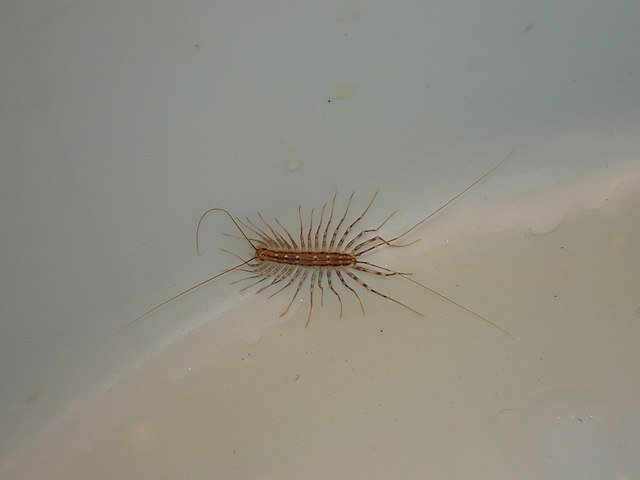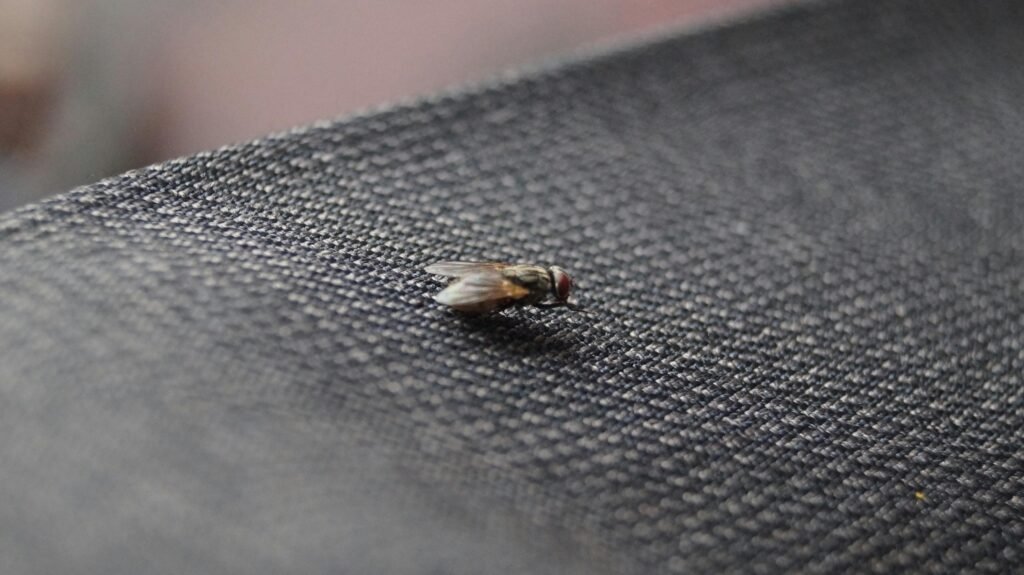Furniture Carpet Beetles (Anthrenus flavipes): Identification and Control
Introduction
 Many homeowners confuse furniture carpet beetles (Anthrenus flavipes) is well known carpet beetles, not confuse it with cloth moths or other fabric pests, but they’re a different enemy altogether.
Many homeowners confuse furniture carpet beetles (Anthrenus flavipes) is well known carpet beetles, not confuse it with cloth moths or other fabric pests, but they’re a different enemy altogether.
These tiny, round beetles may look harmless, yet their larvae can silently destroy wool, upholstery, silk, feathers, and even taxidermy specimens.
As a pest control expert, I’ve seen homes where people blamed humidity or poor fabric quality — but the real culprit was this small, patterned beetle hiding under the sofa or behind picture frames. Once they settle, they can damage thousands of euros’ worth of materials before anyone notices.
Identification
Adult furniture carpet beetles are small — about 2–3 mm long — with a distinct pattern of white, yellow, and black scales on their round backs. When the beetle gets older, these colors may fade.
The larvae, often called “woolly bears”, are brownish, covered with short, dense hairs, and look like small bristly worms. Unlike pantry beetles that infest food, furniture carpet beetles focus on natural fibers and organic materials.
They are often mistaken for other species like Anthrenus verbasci (varied carpet beetle) or Attagenus unicolor (black carpet beetle), but A. flavipes has the most distinctive yellow-white pattern.
Biology and Ecology
The life cycle of Anthrenus flavipes depends heavily on temperature and humidity.
Eggs: Laid in cracks, crevices, or under furniture near organic material.
Larvae: The destructive stage — they feed on natural fibers, hair, feathers, and even dead insects.
Pupae: Usually found in hidden, dark corners.
Adults: Live 2–6 weeks and are attracted to light, often seen near windows.
They thrive in moderate humidity (50–60%) and temperatures between 20–25°C, which makes them perfectly adapted to most homes across Europe, North America, and Asia.
Global Distribution
The furniture carpet beetle is a cosmopolitan pest, spread through trade in wool textiles, antiques, and used furniture.
It is widespread in Europe, the United States, Canada, Australia, and parts of Asia and Africa.
Because the larvae can survive months without feeding, infestations often start when people bring home old chairs, carpets, or vintage items.
Risks and Damage
These beetles don’t bite or sting humans, but their larval hairs can cause skin irritation or allergic reactions.
The real damage, however, is economic:
Holes in wool carpets, upholstered furniture, and clothing
Damage to stored fabrics, felt, and furs
Contamination of museums or collections (where they feed on preserved specimens)
I’ve personally treated libraries and art storerooms where the larvae were eating through historical materials — slow but relentless.
Signs of Infestation
Look for:
Small round holes in fabric or carpet fibers
Shed larval skins in corners, drawers, or under rugs
Adults near windows trying to fly out
Fine dust or frass (insect droppings) around damaged items
If you notice larvae near window sills or vents, it’s often a sign that the infestation is already spreading.
Control Methods
1. Inspection and Cleaning
Start by identifying all affected areas. Vacuum carpets, curtains, and furniture seams thoroughly. Remove lint, dust, and animal hair where larvae hide. Dispose of the vacuum bag immediately.
2. Heat or Freezing Treatment
Infested fabrics can be treated by washing above 50°C or by freezing below −18°C for at least 72 hours. Both methods kill eggs and larvae effectively.
3. Sealing and Storage
Store clean items in airtight containers. Avoid cardboard boxes — larvae can chew through them.
4. Residual Insecticides (Professional Use)
A licensed professional can apply residual sprays in cracks, baseboards, and under furniture — but never directly on fabric or contact surfaces.
For heavy infestations, insecticidal dusts or aerosols may be used in inaccessible voids.
5. Integrated Pest Management (IPM)
Long-term prevention includes:
Regular cleaning routines
Exclusion of bird or rodent nests (they attract beetles)
Installing window screens to prevent adult beetles entering
Monitoring with sticky traps designed for carpet beetles and moths
Advanced Approaches
In museums and high-value collections, controlled atmosphere treatments (low oxygen or high CO₂ environments) are used to kill all life stages without chemicals.
Heat chambers or inert gas systems are also effective and safe for sensitive items.
Professional pest managers may also use pheromone traps to monitor population activity and timing.
Cultural and Historical Context
Humans have been protecting fabrics and furniture from insects for millennia. In Victorian England, carpet beetle infestations were so common that wealthy homes stored their rugs in sealed tin cases during summer months.
Even in modern times, furniture carpet beetles continue to spread through antique trade and global travel, turning them into one of the most persistent household fabric pests on Earth.
FAQ
1. Can furniture carpet beetles bite humans?
No, but their larval hairs can cause irritation or allergic reactions.
2. How are they different from moths?
Moths fly more often and their larvae spin silken tubes. Beetle larvae are hairy and crawl freely.
3. Do they eat synthetic fabrics?
They prefer natural fibers like wool and silk, but may damage synthetics blended with organic material.
4. Are they dangerous to pets?
Not directly, but they may feed on shed pet hair or bedding.
5. Can I remove them without chemicals?
Yes, through cleaning, freezing, and heat treatment, but professional help is often needed for full eradication.
6. Why do I keep seeing them near windows?
Adult beetles are attracted to light and often gather near windows after emerging indoors.
Final Thoughts
The furniture carpet beetle (Anthrenus flavipes) may be small, but it’s one of the most destructive insects found inside homes and museums. I’ve seen entire wool carpets and upholstered chairs ruined within months because the problem went unnoticed.
If you’re finding mysterious holes in fabric or small beetles near windows, act quickly — cleaning and heat treatment can stop the early stages, but once larvae spread inside furniture or floorboards, professional pest control becomes essential.
Always remember: prevention is easier than elimination. Keep your home clean, inspect second-hand furniture before bringing it in, and seal stored fabrics properly. With a mix of vigilance and the right treatment, you can keep these silent destroyers under control.
Disclaimer
This article is for informational purposes only. Pest control laws and approved chemicals vary by country. For best results and legal safety, we strongly recommend contacting a licensed pest control professional in your local area. Always make sure that the pest control technician is properly certified or licensed, depending on your country’s regulations. It’s important to confirm that they only use approved products and apply them exactly as instructed on the product label. In most places in Europe, UK, or USA, following label directions is not just best practice—it’s the law.
Author
Nasos Iliopoulos
BSc Agronomist & Certified Pest Control Expert
Scientific Director – Advance Services (Athens, Greece)
Licensed Pest Control Business – Ministry of Rural Development & Food (GR)
References
University of Florida - Furniture Carpet Beetle, Anthrenus flavipes
Wikipedia - Anthrenus flavipes


